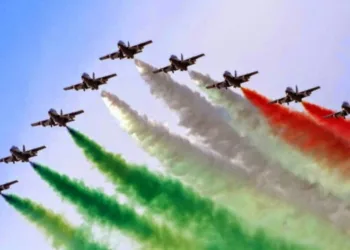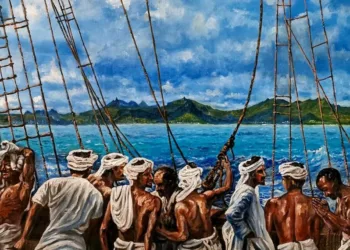In ‘1971: Stories of Grit and Glory from the Indo-Pak War’, General Ian Cardozo recounts true stories from the battlefield replete with incredible bravery, pain and loss, with great flair
By Dr Sanjeev Chopra


General Ian Cardozo receiving the Sena Medal for gallantry from the Army chief, Gen Chaudhuri, January 1964
What motivates a soldier to give up his life for the nation? How do commanders lead their men? Are obstacles primarily physical or mental? What is the interface between the political and military leadership – both in times of peace as well as in war? How do we remember our heroes? Is individual heroism a substitute for strategy – or do they both work in tandem? What is the great strength of the Indian army where soldiers from across the country fight together for the glory of the tricolour? How did our Army acquit itself in the 1971 war which led to the birthing of a new nation? Does fighting for a cause, and popular support give that extra edge to the army over its military adversary?
How did our Army acquit itself which led to the birthing of a new nation? Does fighting for a cause and popular support give that edge to the army over its military adversary?

For answers to these, and many more related questions, it is best to pick up this eminently readable book, which can be read again and again as General Ian Cardozo has a way with words, but when words are suffused with real–life experience, it is like living history itself. As he says, while an official history of the war has been written and published by the Government of India, it makes heavy reading, and perhaps the time has arrived for every citizen of India to have access to what happened during those turbulent days in the form of stories. Everyone loves a good story, and I hope these true stories from the battlefield will reach a wider audience and open a window to the man in the street as to what happens during a war in the life of a nation, and in the lives of the officers and the men they lead into battle. Rachna Bisht writes, “Reading General Ian Cardozo’s 1971 is like going on a historical walk with a guide who knows every nook and corner of the war zone and is willing to show it all to you. He holds your hand and takes you through tales of incredible bravery, but also pain and loss, bringing you so close to his characters that you almost feel their breath upon your face. Steeped in history, peppered with fascinating anecdotes, these stories are told with great flair, sometimes making you laugh, sometimes bringing a tear to the eye. And to his credit, despite having been in the war himself, he shows you both sides of the conflict, often taking you inside the borders of Pakistan and into the minds of the decision-makers on the enemy side as well, paying odes to the courage of both armies. There would be very few people now living who know more about the 1971 war than General Cardozo; after all, he fought it himself. But for me, the most endearing quality of the book was that he wears that distinction so lightly, narrating his own stories with delightful wit and self-effacing charm. He features in a few of the narratives but walks in and out of these with such reticence that you recognize him only if you look closely enough. Often, he does not even mention himself by name. General Ian Cardozo’s 1971 is a book that I shall keep at my bedside for a long time. No one else could have written it.’

The book also talks about the constellation at the top during this crucial period. The political leadership and all the three chiefs were in sync – both about strategic objectives and the operational aspects of the war. The three chiefs: Gen Sam Manekshaw, Admiral S N Nanda and Air Chief Marshal P C Lal were exemplary professionals and worked in tandem to create the new nation: Bangladesh. One of the greatest strengths of the Indian army is the camaraderie and rapport among officers and men of a ‘paltan’ – which is more than family for all its members. Officers lead their men and orders are followed unquestioningly and with great courage because the officers and the men are in it together and make a formidable combination. As Gen Cardozo writes, “Leading men into battle is a privilege given to very few. It is an awesome responsibility because of the underlying understanding in the minds of the combatants that they may never come back alive. Leadership, therefore, has necessarily to be of the highest order. The officers of the Indian Army lead from the front and the exhortation is ‘Follow me!’ Therefore, percentage wise, the casualty rate of officers of the Indian Army is very high. In my own battalion, the 4th Battalion of the 5th Gorkha Rifles (FF), we entered the 1971 war with eighteen officers, and at the end of a thirteen-day war, four were killed and seven badly wounded. Only seven were left unscathed or with minor wounds.”
The book is over twelve chapters, and each one of them can be read as an independent story–The Hunt for the Vikrant, The Gates of Rattoke, Mission Karachi, The Beeb’s Best Broadcast, Long Shot at Longewala, Good Is Better Than Best, A Touch of Luck, Vazir, A Bullet for Breakfast, The Sinking of INS Khukri: A Captain’s Dilemma, The Beginning of the End and Then there was One. This reviewer will only give you a foretaste of what the book contains – for it is important that the book is read cover to cover. The Hunt for Vikrant is a riveting tale of how the Ghani submarine, tasked to torpedo INS Vikrant, was led astray, and ended up blowing itself. The Gates of Rattoke is the story of how the 1/5 Gurkhas was led by their CO Suresh Gupta who overcame an overwhelming personal tragedy to lead his battalion, not just to capture Pakistan positions, but more importantly to seek the return of the gates of the Gurudwara of Rattoke, and when the Gurkha troops got them back, the Granthi recited ‘Waheguru ji ka Khalsa! Waheguru ji ki Fateh!’
Sometimes, a ‘mistaken’ announcement can turn the turn of events in a war – as for example, when in a radio broadcast, the BBC mistakenly announced that ‘a brigade of Gorkhas had been heli-landed at Sylhet’. It is not known whether the BBC war correspondent who had filed his report got mixed up between the terms ‘battalion’ and ‘brigade’, and whether he knew that a brigade was three times the strength of a battalion!

Army chief, Gen Chaudhuri, January 1964
The world knew that the BBC was a source of authentic news. Generally, they managed to not only get their facts right but also get their reports out ahead of everyone else. Their enterprising war correspondents were given permission by the Indian government to accompany the advancing forces and were the refore able to send back reports straight from the battlefield. Everyone therefore listened to what the BBC said and believed it to be true. By broadcasting the truth, the BBC rendered Pakistani propaganda useless, and no one believed Radio Pakistan anymore. The world listened to the BBC because the BBC always told the truth. This time, however, it had made a mistake—a mistake that the Gorkhas could use to their advantage. This was, if one could draw a parallel with the Mahabharata – the Ashwatthama moment!
Reading General Ian Cardozo’s 1971 is like going on a historical walk with a guide who knows every nook and corner of the war zone and is willing to show it all to you.
The valour of Brig (then Colonel) Chandpuri and the Battle of Longewala is the stuff of legend, but Cardozo points to the prominent role played by the Indian Air Force in the destruction of the enemy force. On the other hand, lack of air support to the Pakistani offensive contributed to the destruction of the Pakistani offensive and the demoralisation of its commanders.
The ‘Vazir’ could have happened only in the Indian Paltan. The JCOs and the NCOs insisted that the second-in-command (2IC in military parlance) of their Gurkha battalion should be called Vazir, as the position of 2IC was jinxed. And it is perhaps the only such instance in the world – but also shows that the JCOs feel entitled to advise their seniors on issues affecting the morale of the troops, and that their views are respected! If you ever happen to visit the 4th Battalion of the 5th Gorkha Rifles (FF), and if you look for the Second-in-Command, you won’t find him. You will only find a Vazir.
One could go on and on – but there is a word limit that one must adhere to, and so this review will close with the comments of a Bangladesh war veteran and a highly decorated officer veteran of the Mukti Bahini, Lt Col (retd) Qazi Sajjad Ali Zahir, Bir Protik, Swadhinata Padak, and Padma Shri. “Many men can make history, but only great men can write it. General Cardozo is one of those who can do both. His book is about the Liberation War of Bangladesh of 1971, the sacrifices and birth of a nation through a tidal wave of blood. His book reflects the tremendous cooperation between the Indian forces, Mukti Bahini and the common people of Bangladesh. It reflects the brotherhood of men at arms who chose to fight on their feet rather than die on their knees. Let history say that they together brought to Bangladesh the winds of freedom and justice. These stories appear to me more of a ballad of blood and sacrifice than a record of history. His blood has mingled with the muddy soil of Bangladesh, and victory was achieved by sacrifices such as his.”
The author is a historian, public policy analyst, and Festival Director at the Valley of Words, Dehradun. Until recently, he was the Director
of the Lal Bahadur Shastri National Academy of Administration, Mussoorie.







